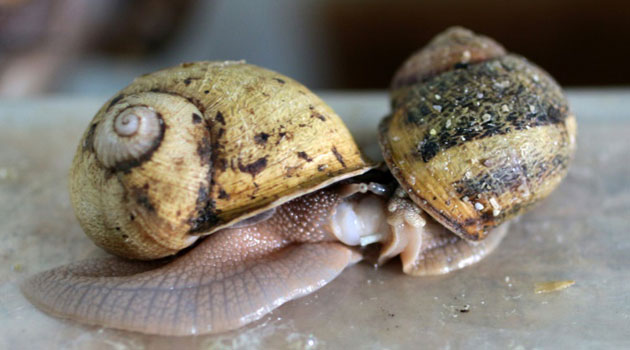
With five breeds in all, the snail farm Lumaca Madonita in Sicily has over two million snails on site, and the mating season is a free for all/AFP
But while the production cycles at other organic companies from Italy to France and Spain can last up to three years, one Sicilian start-up has cut the time down to eight months. Their secret? Cereals.
“We feed the baby snails a vet-approved diet of cereals, calcium and vitamins which means they grow much more quickly than they do eating leaves,” Davide Merlino, one of the Lumaca Madonita company’s co-founders, told AFP.
Showing off the humid, temperature-controlled indoor breeding ground – netting-covered crates with boxes of earth inside where the snails lay their eggs – Merlino said they had rejected intensive farming for an eco-friendly process.
Egg collection is a painstaking business, but a rewarding one: a 50 gram jar of eggs sells for 80 euros ($86).
While traditional Mamma-run trattorias may not yet serve the delicacy, Italians are no strangers to eating snails, and overloaded baskets of the creatures waving their tentacles are a common sight at markets, particularly in the south.
They have been cultivated since Roman times, with author and naturalist Pliny the Elder raving about snails fattened on donkey’s milk and wine. The delicacy became hugely popular among the wealthy, leading to the creation of the first snail farms in Pompeii.
Italians ate an estimated 40,000 tonnes of snails in 2014, ahead of France where annual consumption is around 30,000 tonnes. And while the latter relies heavily on imports, Italy grows almost half of its own needs, on farms from Piedmont in the north to central Lazio and Puglia and Sicily in the south.
Import numbers have dropped sharply over the last decade as increasing numbers of Italian farmers turned to this niche sector, one of the few to weather the economic crisis.
And snail caviar, which made a first unsuccessful appearance in the 1980s, is also winning over European taste buds.









































